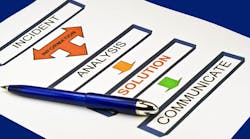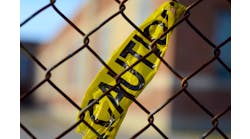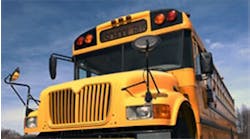Disaster strikes at any time, on any given day. It doesn’t wait for the school bell to ring, signaling the end of the day. Two recent disasters—the Boston Marathon bombing and the Oklahoma tornadoes—happened in the middle of the day, while schools were in session and filled with students. Whether a disaster is natural or manmade, having an emergency response plan in place will help education institutions be prepared no matter what crises they are facing.
Preparing a Disaster Plan
When developing an effective disaster-response program, education institutions will benefit from specialized guidance. Working with an organization familiar with school emergencies helps ensure a plan that is specific to the education industry. Prior to the development of a plan, a thorough risk assessment of all potential risks and hazards to buildings and campuses is critical.
It’s important to note that different regions of the nation are faced with different threats and hazards. California, for example, prepares for earthquakes. Oklahoma braces for tornadoes, and the East Coast takes heed at the mention of a hurricane. Conducting a risk assessment can help determine the best way to proceed in a disaster.
Best practices have demonstrated that the minimum critical elements of an effective school disaster program should:
•Identify hazards and conduct a risk assessment specific to a building and campus.
•Develop a robust emergency plan that addresses how to mitigate, prepare, respond and recover from hazards and risks specific to the school community.
•Include crisis communication planning.
•Provide training, drills and updates to the plan.
•Practice, practice, practice. Sandy Hook Elementary School, Newtown, Conn., worked aspects of its emergency-response plan throughout the year—it resulted in staff and students knowing how to respond when the crisis occurred.
An effective emergency-response program would include plans to evacuate a building, but also should include a plan to shelter in place when the situation warrants. The plan will need to address the special needs for each of these situations. If school leaders decide to shelter in place, some additional needs will include:
•Securing the building.
•Maintaining sufficient food/water supplies.
•Accounting for students and staff.
•Communicating with families.
Emergency Response Preparedness
Although no federal laws require school districts to have crisis-response plans, most states and school districts do have requirements for such planning. In 2007, the U.S. Government Accountability Office (GAO) reported that about 95 percent of all school districts have written emergency-management plans. Most of these plans also specify staff roles and responsibilities.
Most school districts have taken the federally recommended steps to prepare for emergencies, but education institutions should incorporate additional components into an emergency plan:
•Lockdown procedures.
•Special-needs students’ safety and evacuation.
•Limited-English-proficient communication (students and families).
•Family member notification.
•Tracking of students.
•Continuing student education in the event of an extended school closure.
•Updates to plan.
•Crisis communication and social media.
Crisis communication
The initial critical communication needs during a crisis revolve around accounting for everyone’s status and location, and notifying family. Additional communication needs will focus on the effect of the disaster on the school and the community. Many advances in mass emergency notification have been developed since the Virginia Tech massacre in 2007.
Determine who on staff will be best at delivering messages. It might be the school principal or college president, or a member of the school district or campus communications office. These people will be in the best position to communicate directly with the media, students, school families and other internal or external stakeholders. The crisis team members are better suited to communicate directly with the employees and families involved. Crisis-response counselors are trained in how to deliver bad news to families and how to deal with the reaction.
In times of crisis, social media communications take on a life of their own. After the Boston Marathon bombing, cellular service was halted temporarily. Because cell towers can be overwhelmed with traffic during times of emergencies, it’s important to use multiple options to send and receive communication—broadcast phone messages, texting, Twitter, Facebook, TV news and their mobile alert apps, and radio.
Using social-media resources enables education institutions to communicate messages more quickly. Through social media, schools have a resource to identify urgent needs, provide accurate and updated information, quickly connect family members and provide additional services that may not be available at the source of the disaster.
It also can be used to monitor for information on emerging threats. Law-enforcement officials called on citizen videographers for help in the Boston Marathon attack, asking for video and photos taken with their smartphones to help find any clues to what happened.
Putting Plans into Practice
A disaster-response plan should be a “living” document. It needs to be updated regularly and put to the test at least annually. The plan also should be developed and written in a manner that is easy to use for any level of staff. Just as schools practice monthly fire drills with staff and students, disaster drills should include the entire school and be conducted regularly. As stories unfolded after the shootings at Sandy Hook Elementary School and again after a tornado ripped apart two elementary schools in Moore, Okla., schools learned how well-trained the principals and teachers were in following emergency protocols.
If a plan is operational and provides specific information and guidance to staff, the event still will be a challenge. However, the ability of the staff to protect the health, safety and welfare of others (along with their own) will be enhanced.
Prepare for the Aftermath
If a disaster strikes, institutions can rely on disaster plans to ensure resiliency and recovery. Another key component to the plan should address the human side of disaster recovery. Plan to bring in crisis counselors after a disaster to talk with students, staff and family members. These counselors have expertise with mental-health issues and critical incident experience to assist with the human side of recovery by providing meaningful support to those affected.
Providing updates to students, faculty, staff and families also will help them move past a disaster. Information about the response and lessons learned will help improve the resiliency of staff, students and the community, and the recovery can begin.
Marinelli is senior director of crisis management services with FEI Behavioral Health (FEI), Milwaukee, which provides crisis support following workplace violence, natural disasters, aviation accidents and acts of terrorism. (414)359-6567


